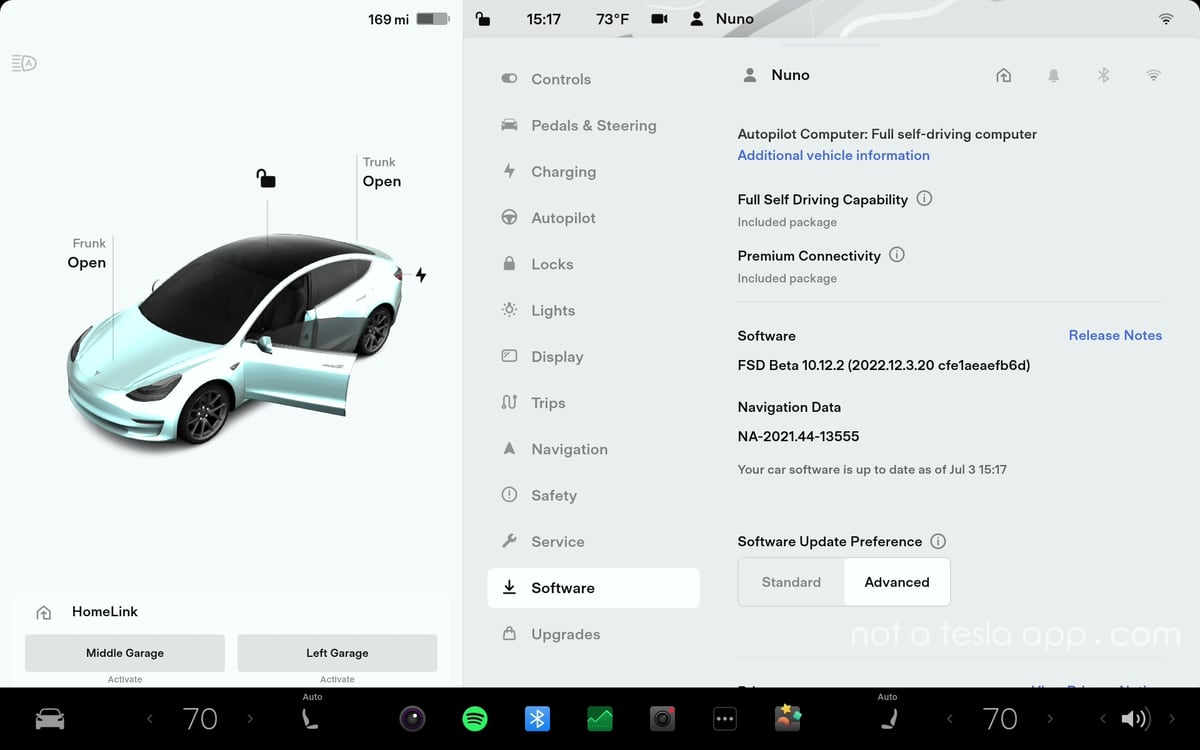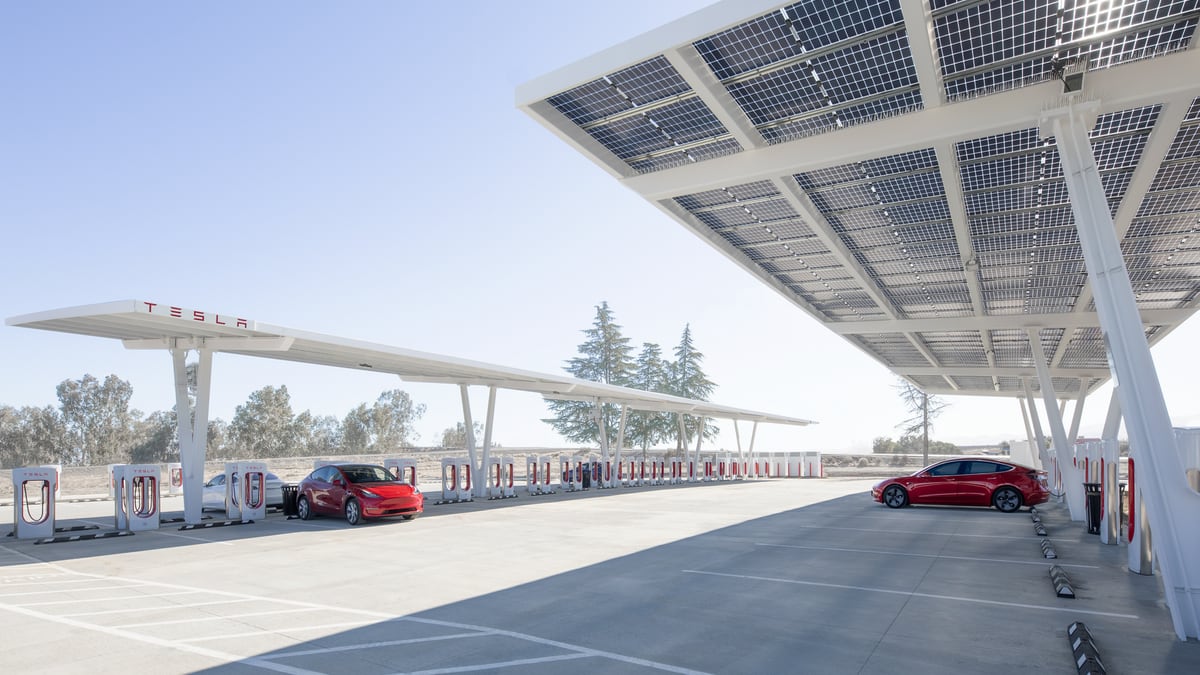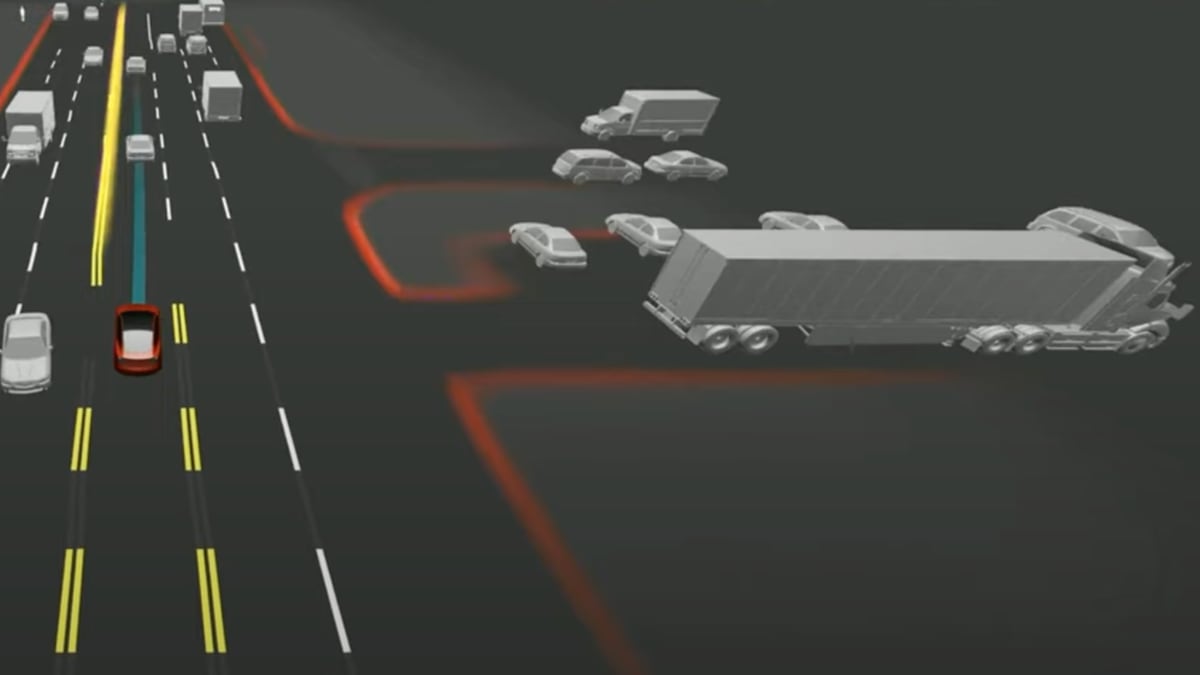By Lennon Cihak

Tesla releases a major update about once a month that includes feature improvements, safety enhancements or new features.
While some owners may receive an update within a few days of it being released, most owners will actually not receive the latest update for several weeks.
There are a couple of reasons why Tesla doesn't update all of its vehicles at the same time.
Unfortunately, updates for Teslas aren’t like mobile devices where an update is available for everyone right away. There’s a little more that goes into pushing updates for vehicles, especially for a vehicle that can drive itself.
How Tesla Rolls Out Updates
Tesla rolls out updates to its fleet based on the vehicle's VIN, region, model, hardware, and other factors. The main reason Tesla rolls out updates in this manner is to minimize risk and to asses how an update is performing.
Rolling out updates slowly lets Tesla quickly iterate on their update and focus on feedback and bug fixes before a potential issue has the chance to affect a large number of vehicles.
If, for example, an update caused the MCU reboot , making the display go dark while the vehicle was in motion, Tesla could more easily isolate the issue. Tesla would then be able to roll out a fix before the issue had a chance to affect a larger portion of their fleet.
Your vehicle model or other hardware in your vehicle is taken into account as well. For example, if Tesla is looking to gather feedback on a feature that requires MCU 2 or MCU 3, they may first send the update to those vehicles before releasing it more widely.
If you look at our software updates page you'll see that there are Tesla vehicles on a wide variety of updates. Some may be on the same major update, but on a different revision, while others may be one or two major updates 'behind'.
Although a vehicle can have an update that gets 'stuck' while downloading, that's usually relatively rare. If you notice that your vehicle falls too far behind, you can send a message to Tesla Service to see whether there is an issue with your vehicle.
What do the Numbers in Tesla Updates Mean?
Tesla's release process is why you may notice several versions for the same update.
For example, Tesla may first release update 2022.36, but as new issues are found and Tesla fixes them, Tesla will roll out further updates such as 2022.36.1 and 2022.36.2.
The 2022 in the version number stands for the year in which development began for this update. The 36 stands for the week number, and the last number stands for the revision of the update.
So in general, 2022.36.1 would include the same features as update 2022.36 but would contain several fixes for issues that were found in 2022.36, while 2022.36.2 would contain fixes that were fixed after 2022.36.1 was released.
This isn't always the case since Tesla does sometimes release new features with a minor revision, or but in general it's a good rule of thumb.
Once Tesla is confident they have solved all known issues, they'll then send out the update to the entire Tesla fleet.
Can I Force My Vehicle to Receive an Update?
Unfortunately, no. Under normal circumstances, there is no way to force your Tesla to receive an update. You'll simply have to wait until the update is available for your vehicle.
However, there are a couple of things you can do to receive updates as soon as possible.
It's not clear how much this toggle does anymore, but if you're interested in receiving updates as soon as they're available it's a good idea to toggle on “Advanced Updates” under the Software tab in your vehicle.
You'll also want to make sure your car is connected to Wi-Fi as often as possible, such as at home or work. Tesla prefers to download updates over Wi-Fi so this will ensure you get an update as soon as it's available to you.
You can track which updates are going out to by checking our software updates page.
How to Check if Your Tesla is Running the Latest Update
If an update is available for your Tesla, it will usually show up in your mobile app, although it's not clear how often the mobile app checks for updates. If you suspect an update may be available for your vehicle, you can check in your vehicle, although Tesla has recently started limiting this check to once per 24-hour period.
To check if there is an update available for your Tesla, tap Controls (the car icon), and then tap on Software. On the right side, you'll be able to check your vehicle's version and whether an update is available.
Your vehicle does not need to be connected to Wi-Fi to check whether an update is available
Do I Need to be on Wi-Fi?
For the most part, Tesla requires that updates be downloaded while the vehicle is connected to Wi-Fi.
However, there are exceptions to this. If an update includes important fixes or a recall then it is usually available over cellular. The same goes if you haven’t updated your vehicle in a while, are on FSD Beta, or other unique scenarios.
If you can't connect to Wi-Fi at home or work, you can try using public Wi-Fi networks or using your mobile phone as a hotspot for your vehicle.
By Kevin Armstrong

Teslas, which make up the majority of electric vehicles, got caught in the crossfire during the September heatwave in California. As a result, owners of zero emissions cars were asked to limit when they plug in to charge. However, now that the emergency has passed and cooler heads have prevailed, several reports are surfacing showing how little EVs drain the electric grind. Spoiler alert, it's not much, and maybe less than you thought.
Let's start with California. According to Scientific American, EVs in that state account for: "less than 1 percent of the grid's total load during peak hours." California has more than 1 million electric cars, the most of any state in the U.S. But what about the drain caused by the other 26 million EVs worldwide? It's even lower.
A research branch of Bloomberg studies "trends driving the transition to a lower-carbon economy," published a report looking at the global situation. According to BloombergNEF, electric vehicles add around 0.2% to global energy demand. That accounts for 27 million electric passenger vehicles worldwide using 60 terawatt-hours annually.
BNEF zoomed in on a country well ahead of the curve on EV adoption. More than 20 percent of the cars on the road in Norway are plugging in, and these EVs are racking up more miles than ICE cars. Plus, nearly 80 percent of vehicles bought in 2021 in that country are electric. So indeed, the system cannot handle such a drain - right? It turns out EVs in Norway account for 1.4 percent of demand on the grid.
BNEF also crunched the numbers to forecast future consumption. It researched two scenarios for EVs in the next two to three decades. One deals with the main driver of EV growth being market demand. This situation assumes there will be 730 million electric passenger cars by 2040. If that were the case, these passenger vehicles would increase electricity demands by 7 percent. When adding other vehicles like buses and trucks, the demand would rise to 11 percent.
In the other scenario, the report assumes the world will be net-zero CO2 emissions by 2050. In that case, there will be 1 billion EVs on the road, which would increase demand to 9 percent, and when adding in other vehicles, that number goes to 15. The report went even further. If every vehicle on the road were electric by 2050, the demand on the grid would be 27 percent.
With more people going electric, that demand will grow, and it is up to jurisdictions and utility providers to upgrade the system accordingly. Every country, state and city must plan for this growth to handle the EV revolution.
By Gabe Rodriguez Morrison

During AI Day 2, Tesla showed off video of some of their latest FSD work. These video clips featured vehicle models that were much more detailed than the models in the current FSD Beta.
Tesla last updated the models used in their visualization with FSD Beta 10.12 (2022.12.3.10), which was released this past May.
Tesla then rolled out those visualizations to non-beta versions starting with update 2022.16.
The updated visualizations were completely redesigned and are now more realistic than the previous models they replaced. The sedan now have wheels, windows and a glass roof, instead of the previous model that resembled a Model S keyfob.
Tesla also started visualizing open doors, turn signals and added a new visualization for brake lights.
However, these new visualizations featured during AI day 2 appear even more detailed.
The video from Tesla AI day 2 includes various sizes of trucks, sedans and SUVs that have more accurately represented doors, windows, glass roofs, and wheels.
For example, you can make out the headlights on vehicles, mud flaps on trucks and even the rear door latches on semi trucks.
It's still not clear whether these updated visualizations are something Tesla was testing, an earlier version of the visualizations that eventually arrived in the 2022.16 update or a newer visualizations that will arrive in a future update.
If Tesla decided to implement these new visualizations, they may also take up significantly more resources, which begs the question whether they'd apply to all MCU versions.
Although the visualizations are not tied to what the vehicle can detect and react to, they provide a criticial role in letting the driver know what the vehicle can see.
Tesla may be pushing out some improvements to Tesla Vision in the near future, as Tesla recently announced that they will no longer integrate ultrasonic sensors (USS) into their vehicles, starting with the Model 3 and Model Y this month.
This major announcement came after the company removed the radar sensor from it's Model 3 and Model Y vehicles in May of 2021 and more recently in the Model S and Model X.
Since the removal of radar, Tesla has made significant progress with its vision-based system. Tesla's vision-based occupancy network will now replace inputs generated by USS.
Bagikan Berita Ini














0 Response to "Why Tesla doesn't update all of its vehicles at once - Not a Tesla App"
Post a Comment